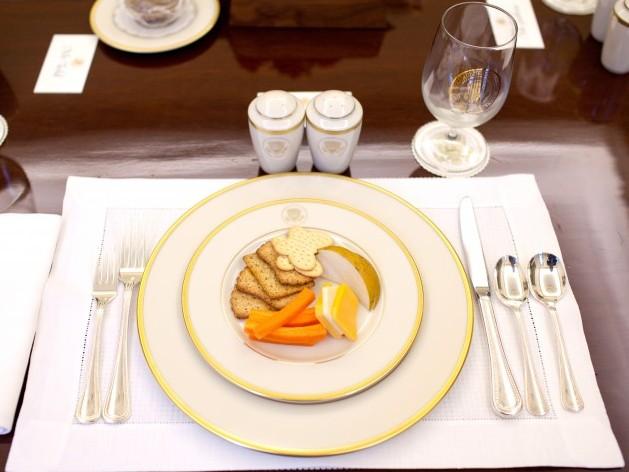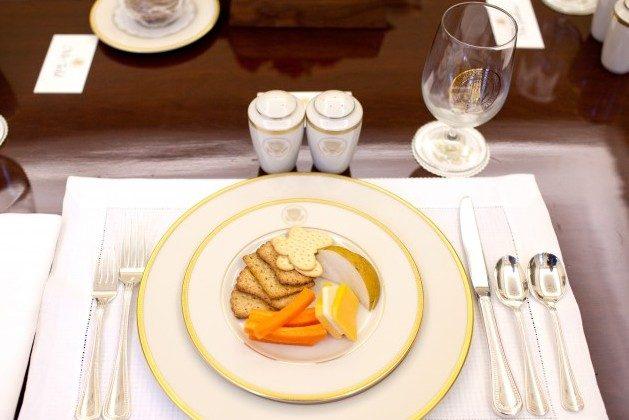
Cutting salt intake could reduce the number of stomach cancer cases in the UK, and “traffic light” colour labelling would help consumers to make that choice, says a leading UK cancer research charity.
Scientists estimate that one in seven cases of stomach cancer could be avoided through reducing salt intake.
The public are increasingly aware that high salt consumption increases the risk of high blood pressure, strokes, and heart disease, but less attention has been paid to the association between salt and stomach cancer.
“We want to make people aware of the link between salt and stomach cancer,” says Dr Rachel Thompson, deputy head of science at World Cancer Research Fund (WCRF) UK. “The public don’t necessarily make that link.”
New government figures released show that in 2009 there were 7,500 new cases of stomach cancer diagnosed in the UK. WCRF estimates that 1,050 cases could be prevented.
Lifestyle and cancer statistics compiled by the charity show that the average daily salt consumption is 8.6 grams – more than 40 per cent above the recommended daily amount of 6 grams.
“Too many people are eating too much salt,” Thompson says.
A 2007 WCRF report, reviewing all the evidence related to food and nutrition, concluded that salt, and also salt-preserved foods, are probably causes of stomach cancer.
Because stomach cancer is usually well advanced by the time it is diagnosed, only about 15 per cent of patients survive for more than five years, making it the seventh most common cause of cancer death in the UK.
In 2010, there were 4,966 deaths from the disease.
A Department of Health (DOH) spokesperson, Judith Moore, says the association between salt intake and cancer was based on observational studies, which do not provide strong evidence of a link.
Moore points out that the WCRF report says that where diets are traditionally salty, due to the regular consumption of meat, fish, vegetables, and other foods preserved by salting, it was noted that stomach cancer rates are highest.
She says these findings are not relevant to the UK as such highly salted foods are not consumed widely here.
“One in seven cancers could be prevented is quite speculative on their part,” Moore says.
Thompson concedes that manufacturers and food retailers have already reduced the salt in pre-prepared and packaged food, but consumers may not realise that foods contain hidden salt.
“It’s quite difficult to know which food contains salt, like bread, breakfast cereals, cakes, and biscuits,” she says. “So it’s important that that information is on the label.”
Kate Mendoza, head of Health Information at WCRF, said in a statement: “WCRF would like to see ’traffic light' labelling on the front of food and drink packaging to give clear guidance on the levels of salt as well as sugar, fat and saturated fat.
“Standardised labelling among retailers and manufacturers – rather than the different voluntary systems currently in place – would help consumers make better informed and healthy choices.”
The DOH does recognise, however, that too much salt can lead to conditions such as heart disease and stroke. “That is why we are taking action through the Responsibility Deal to help reduce the salt in people’s diets. And we are looking at clearer salt labelling on foods as part of our consultation on front of pack labelling,” Moore says.
Stores that have adopted the “traffic light” labelling system include Waitrose, Sainsbury’s, Marks & Spencer, Asda, Boots, and the Co-op.
Tesco does not use this kind of labelling, opting for the percentage of the Gross Daily Allowance (GDA) for fat, sugar, and salt on its front of pack information.
“Customers can easily compare those nutritional elements that matter most; for example calorific content, sugar, fats including saturated fat, and salt,” David Nieberg, Tesco media relations manager, said in an email.
“Supermarkets that do use ’traffic light' labelling say it helps consumers to switch brands or different flavours with less salt, rather than not buying the food,” Thompson said.





